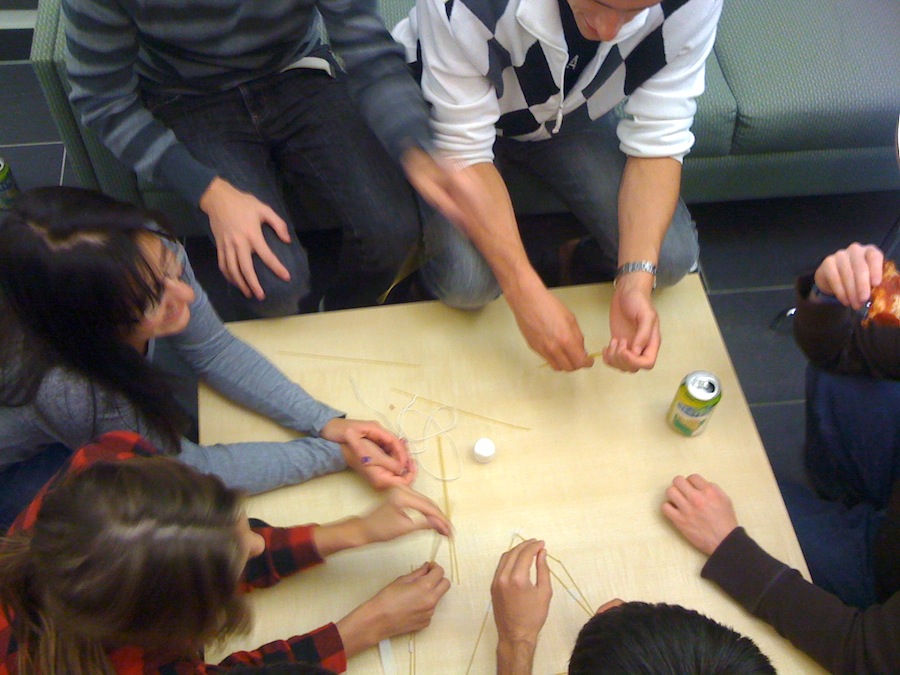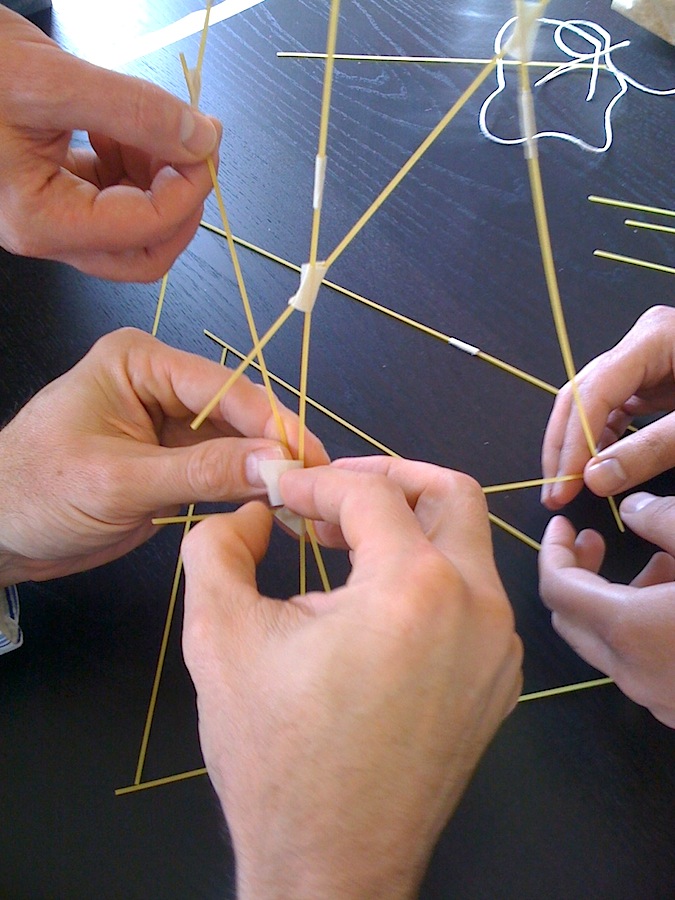
Last week I had the good fortune to facilitate not one, but two Marshmallow Challenge events. Briefly, the Marshmallow Challenge has the deceptively simple goal of building a tower using spaghetti, masking tape, and string, that will hold a marshmallow highest above a table top. Of course the lessons learned and the experience of building the tower, rather than just reading about it, are revealing and meaningful. The two big ones are to question your assumptions and to prototype early and often to learn as much as possible.
The first event, on Thursday, was the September meeting of uxWaterloo. The competition was close, and the teams all had a great time. After declaring a winner, we watched a video of a TED talk about the Marshmallow Challenge. That was really just a starting point for some enlightening discussion about the experience of building towers and about the ideas explored in the video. My favourite moment of the night was the realization that when designing for user experience, the user isn’t a marshmallow that can be plopped on at the end. Tower-builders that take that approach rarely succeed, and a user interface that doesn’t involve users early in the design process will often fail as well.
The second event, on Friday, was at VeloCity residence at the University of Waterloo. Having experienced the uxWaterloo event, I knew that VeloCity should go well, but I was still taken aback by the large number of students and by the enthusiasm and positive energy in the room. The event structure was the same as for the previous night, and the students dived in and seemed to have a great time with the challenge. Needless to say, I had a fine time as well, and enjoyed the conversations immensely. A major bonus for me was that Dan and PJ from tinyHippos were their as well, their young family in tow, to talk about what’s important in building software products at a startup.
Thanks for the invitation, Jesse.





